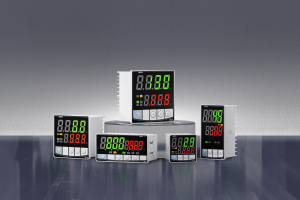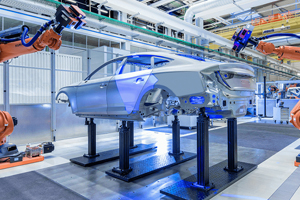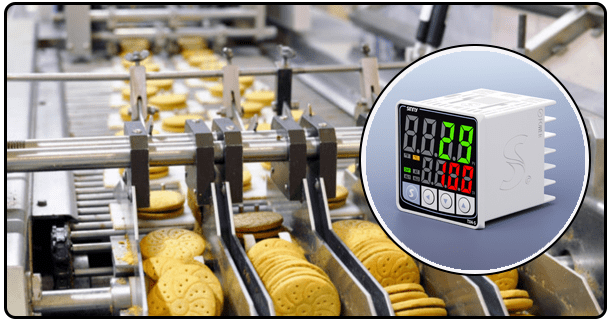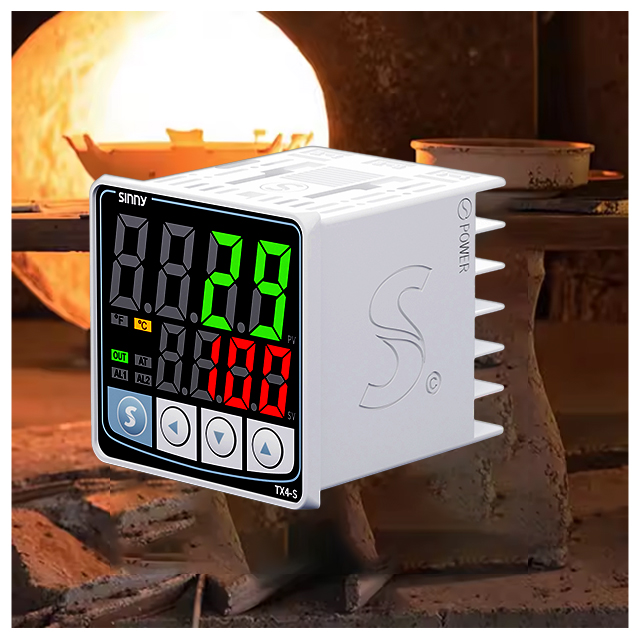PID Digital Temperature Control with PT100 Input for Modern Applications
I. I. Introduction: Precision Control and the Imperative of It
The Digital Temperature Control is explored in this article, with a focus on the integration of PT100 Sensors. This article will explain what the controllers do, how they work, key benefits and features, common applications and considerations when selecting and using them. Anyone involved in industrial manufacturing, process control or laboratory automation will need to understand this technology.
II. The Core Components of the Digital PID Controller and the PT100 sensor
High Accuracy PT100 Sensors can often achieve measurements accuracy within +-0.1degC, or even less. This makes them ideal for applications that require high precision.
Reproducibility: These devices provide consistent results under repeated conditions.
Wiring configuration is a major factor in determining the precision of PT100 sensors. 3-wire or 4-wire are often used to compensate the lead wire resistance, which may introduce errors. The 4-wire configuration is the most accurate because it compensates for resistance in the connecting wires.
The digital controller: the Intelligent Engine
A digital PID controller is different from simple analog temperature controllers because it uses a central processor (MCU). The digital brain is responsible for several important functions.
Signal conditioning: This software amplifies a small change in resistance from the PT100 sensors and uses mathematical transformations for an accurate reading. It is often necessary to use sophisticated algorithms in order to solve the Callendar Van Dusen Equation or lookup tables.
Conversion from Analog to Digital (A/D). This converts the analog signal into a number that can be processed by the controller.
Execution of PID Algorithm: The controller's heart. User interface management: This manages parameters and configurations, interprets keypad or button inputs, displays the information on an LED or LCD screen and stores stored data.
Module Output: The module outputs the control signal calculated into an action. Output modules include Solid State Relays for switching the power on heating elements. Bipolar Transistor Outputs are used for analog control signals, such as 0-10V and 4-20mA. This output module's quality and responsiveness are critical for control.
III. The control process: How PID works with PT100
It is the control algorithm that gives a digital PID controller its true power. The controller continuously measures the temperature of the process, compares that to the set point, then adjusts its output in order to reduce the error. The process happens automatically and many times per minute.
Cycle of Measurement: Using its input circuit, the controller measures the electrical resistance coming from the PT100. The circuit prepares the signal to be converted into an A/D signal by performing necessary signal conditioning and amplification.
Calculation of Temperature: The digital process converts a conditioned PT100 signal to a temperature using an appropriate mathematical model.
Calculation of Error: A temperature calculation is made and compared with the setpoint defined by the user. This difference is called the "error signal".
PID Algorithm: The controller uses the error signal to calculate three components.
Action (P) Proportional: The component responds to the current Error immediately. Output_P is proportional with the magnitude of error. The higher the proportional gain, (Kp), the stronger is the corrective action. However, if it's too high, this can cause instability.
Integral Action (I): The component responds to the cumulative error. The goal is to remove the steady-state residual error, which can often be found with just P-action. Output_I is equal to the sum of past errors, multiplied with a certain factor. (Output_I is Ki * Errordt where Ki is integral gain). The integral action is critical for accuracy over the long term, but can lead to an excessive amount of error if it's not tuned properly.
Action Derivative : The component forecasts the future error using the change rate for the current error. The brake is applied to reduce overshoot and improve stability when temperature changes suddenly. The output depends on the change in error rate (Output_D=Kd*de/dt where Kd represents the derivative gain). The derivative action is sensitive to noise.
Output Control Action: By the output module, a digital signal calculated is transformed into an analog signal or switched signal. The output module controls the control element that is used to complete the process (for example, a SSR controlling an furnace's power supply or a relay attached to a heater wire). This output signal determines the amount of power that is sent to the heater element. The temperature can be precisely controlled by adjusting the intensity.
IV. The Benefits and Features of Digital PID Controls With PT100 Input
The digital PID controllers with PT100 outputs provide a number of features that are tailored to demanding applications.
Exceptional Stability and Precision: By leveraging the accuracy and stability of PT100 sensor and advanced digital processing, the controllers are able to maintain temperatures within tight tolerances, e.g. +-0.1degC, or +-0.5degC, far surpassing the capabilities of standard controllers. The stability of the controller is critical for processes that are sensitive.
Advanced Control Capabilities These controllers are often more than just basic thermostats.
Autotuning Many models have built-in algorithms which automatically calculate optimal PID (Kp Ti Td) parameters by analysing the response of the process. It saves time, and improves consistency.
Programming and Multiple Setpoints: The ability to program temperature profiles, such as ramps, hold, or plateaus. This is essential when dealing with complex processes, like thermal cycling, baking schedules, etc.
Robust alarms: Multiple types of alarms (Lower Limit Limit, Upper Limit Limit, Departure) and configurable actions to warn operators about potential or real process deviations (e.g. light indicator, relay output audible alarm). The use of acoustic alarms is particularly useful for attracting attention, even if the operator does not monitor the display.
Protocols of Communication: Certain models have communication interfaces such as Modbus RTU/TCP or RS-485. This allows integration with larger control systems, (SCADA and PLC), and enables remote monitoring via software.
Easy-to-Use Interface: The modern controllers have clear LED or LCD displays, intuitive keypads and a user-friendly interface. This makes parameter adjustments, configuration and monitoring easy for even non-experts. Setup wizards are included in many models to make initial configuration easier.
Reliability and Versatility: The PT100 sensor is suitable for harsh and wide temperatures. Improved Data Handling: Certain advanced models include data-logging capabilities that record temperature data in real time. This data can be analyzed and documented later for compliance with regulatory requirements.
Safety features: Features such as sensor short detection or open detection, temperature protection limits and high limit alarms, add an additional layer of safety for the controlled process.
V. Applications requiring high-precision PT100 control
Digital PID Controllers with PT100 Inputs are indispensable for many applications due to their high precision, stability and advanced features.
Lab Research: Thermal cycling is required for PCR machines; stable temperature environments are needed in incubators; NMR spectrum analyzers require controlled conditions; calorimeters accurately measure heat change; and environmental chambers can simulate certain conditions.
Manufacturing Industry: Paint booths require consistent curing temperature; Heat treatment processes (annealing and quenching), relying on temperature accuracy, are all dependent on the temperature profile of chemical reactors.
Food, Beverage and Alcohol: Pasteurization needs to be done at a specific temperature for food safety. Fermentation processes require temperature-controlled fermentation for consistency in flavour and yield. Sterilizers need reliable temperature monitoring. Canning lines demand precise temperature measurement for sealing integrity.
Materials science: To achieve the desired properties of materials, furnaces used to anneal, sinter, or quench require temperature controls. Material testing machines also often require controlled temperatures.
Semiconductor manufacturing: Wafer deposition requires very precise and stable temperatures.
Energy Sector Testing batteries requires precise temperature measurements to determine performance; monitoring transformers involves monitoring winding temperatures. Calibration laboratories use these for reference measurement.
VI.
Input Configuration for PT100: Check compatibility of your sensor (wired or wireless) as well as wiring configuration (3 wires or 4 wires). Ensure that the controller is handling any cold junction compensation required correctly.
Output Control: Ensure the output (e.g. SSR, relays, 0-10V or 4-20mA), matches your control element.
Planning and implementation are essential for a successful project.
Hardware installation: Secure and correct mounting of controllers and sensors. For the PT100, and any output devices you are using, follow wiring diagrams to a tee. Consider factors such as cable gauge, shielding and noise in noisy environments when selecting high-quality electrical components.
Even with careful configuration, problems can occur. Basic troubleshooting is often enough to resolve most common issues:
Inaccuracy or Temperature Drift: Verify the PT100 Sensor calibration, inspect the sensor wiring, checking for corrosion or damage (ensure the correct 3-wire or 4 wire configuration), and verify the input filter settings of the controller.
Oscillation or Slow Response: Check your PID tuning parameters. They might be wrong (too high P, or too low I or D). Also make sure the process isn't too slow or has delays. Verify that the final control is working correctly and is able to respond quickly.
Alarm activation: Inspect the alarm condition (e.g. temperature too high or too low, sensor failure detected by controller, low voltage). Consult the manual of the controller for specific codes.
Communication or Display Failures: Verify the wiring connection, and check the baud rate and protocol settings. Also, ensure that the device connected (PC, PLC, etc.) is working correctly.
IX. Conclusion: Precision and Audible Feedback Can Be a Value Addition
Digital PID Temperature Controller With PT100 input represents a major advancement in the temperature control industry. These systems provide accuracy, stability and flexibility that are not possible with other simpler solutions. They combine the high precision of a PT100 with intelligent controls of a PID digital algorithm. They are used in many laboratories and manufacturing facilities around the world because of their user-friendly interfaces and advanced features such as autotuning. The benefits of selecting and tuning PID controllers are substantial. They can improve process consistency and quality and increase operational efficiency. This article provides an excellent foundation to leverage this powerful technology.
- What is the PID temperature controller? A Comprehensive Guide
- Introduction: Precision Control and the Imperative of It























